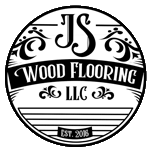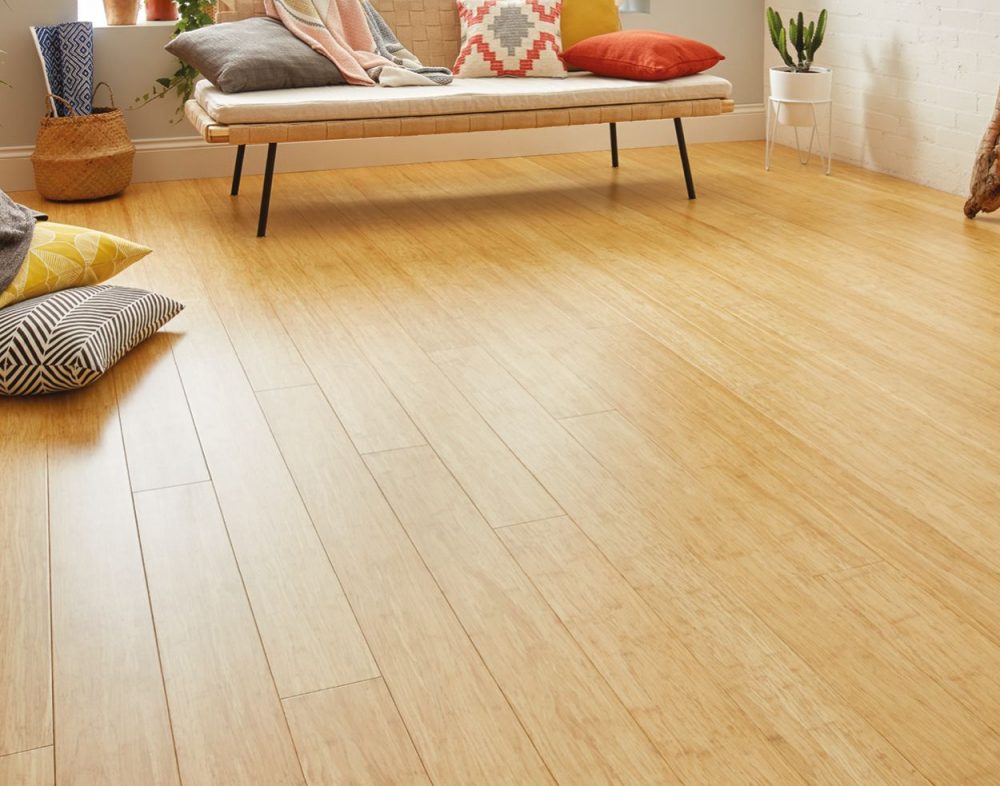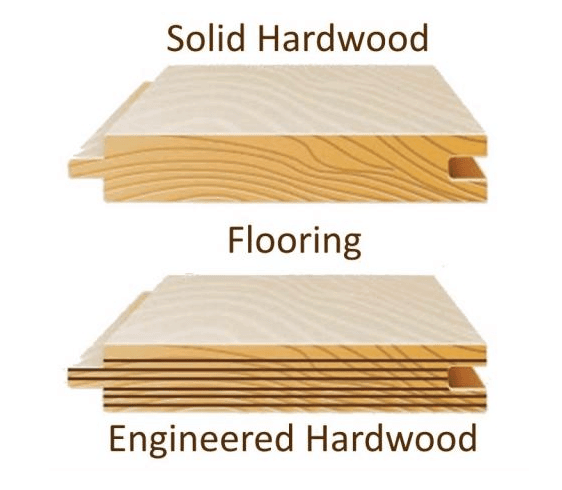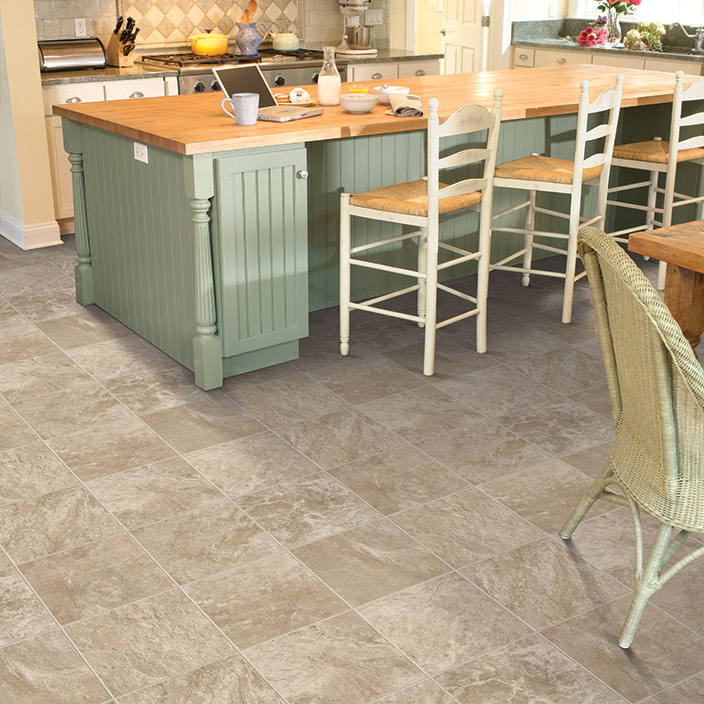What Is The Cheapest Flooring Per Square Foot?
Whether you are getting a floor for your kitchen, bathroom, kiddies room, or living room, getting the best floor deal is what every homeowner wants. Designer looks can be hard on any budget, but asking the right questions, and going to the right place will get you what you want for your home. Furthermore, many floor options are flooding the market every day, and it is quite challenging to keep up with what’s new, affordable, and easy to install. We have outlined the top three cheapest floorings per square foot for you.
Laminate Flooring
Laminate flooring is one of the cheapest flooring available; it constructed like engineered wood, with a thin veneer over layers of compressed fiber or plywood. However, the top layer is a plastic coating, although it looks like wood. If you want hardwood or stone flooring for your home, but cannot afford it, laminate flooring can replace expensive solid wood flooring.
Fortunately, laminate flooring is either planks or tiles, and most of them are floating floor systems. In essence, you don’t need glue or nails to install it over an existing floor. You can get laminate flooring anywhere from $1.00 to $7.00 per square foot.
Laminate flooring is a suitable material for high-traffic areas, like kitchens, playrooms, and foyers. Besides, it is a reasonable floor choice for basements as long there are no leaks or standing water.
Pros
– It is easy to install over old flooring, and it saves time and money on your flooring project.
– It is an imitation of hardwood, or stone and for less money
– It is easy to clean and requires little maintenance It is scratch-resistance
Cons
– Laminate flooring is slippery when wet, and not suitable for bathrooms and laundry rooms.
– Water can get in between the layers of the material, which can cause the planks to warp.
– Laminate cannot be fixed; you need to replace, which makes it a less cost-effective option than wood or tile.
Sheet Vinyl Flooring
No other flooring can beat vinyl sheet flooring for an extremely low-budget flooring; it is cheap and easy to maintain. Sheet vinyl flooring can last up to 15-20 years. You can install sheet vinyl over any subfloors, and those that are uneven or have cracks. However, ensure the subfloor is clean and smooth before installation, or else you will see bumps on your floor from dirt left underneath the sheet vinyl. Unfortunately, this incredible floor option is not stain-resistant, and it can turn yellow over time. Rubber from floor mats or the bottom of your shoes can create a chemical reaction that may not come off.
Also, overexposure to sunlight can cause your floors to fade or yellow. However, you can get sheet vinyl that is resistant to discoloration, but it will cost you extra for that.
Sheet vinyl is not an eco-friendly option; it is not biodegradable, and it is made of PVC and emits volatile organic chemicals.
It costs about $1.00 to $5.00 per square foot, and installation adds $1 to $2 per square foot.
Pros
– It is durable and water-resistant
– It requires low-maintenance
– A perfect choice to install over uneven or cracked subfloors
– Many options available that looks like wood and stone
Cons
– It is not resistant to discoloration
– Difficult to repair
Ceramic Tile
Ceramic tile is made from a mixture of clay and shale, which is fired in a kiln like pottery. Ceramic tile is a hard material that comes in a variety of shapes, patterns, and colors. However, not all ceramic tiles are sturdy enough for flooring. It is essential to clarify the type of ceramic before you buy it.
Furthermore, the price of ceramic tiles varies because it comes in a wide variety of styles and sizes. However, it is possible to pay less than $1 per square foot per tile or as high as $100 per square foot for some specialty tiles.
Types of ceramic tiles
Terracotta: Terracotta is an unglazed tile, which comes only on earth stone; it is less durable than other tiles, and it requires regular sealing to prevent stains.
Quarry Tile: it is another unglazed type of ceramic that has a slightly rough texture: it is more slip-resistant than glazed tile, but the colors are limited.
Porcelain: porcelain is fired at a very high temperature, which makes it extra-hard and durable. It is available in glazed and unglazed. Also, both types work well in outdoor rooms, and they are stain-resistant. Moreover, it is best for high-traffic areas like mudrooms, kitchens, and other wet rooms like laundry rooms and bathrooms, porcelain is a waterproof flooring.
Glazed ceramic: glazed ceramic has a glass-like coating that can give the tile any color or texture. It requires no maintenance.
Pros
– It comes in a variety of shapes and colors and can fit in with any style of home; it imitates natural stone and even wood, but it does not feel like wood underfoot.
– The porcelain tile is more resistant to dents, moisture, and scratches.
– It is easy to clean.
Cons
– The life-span of ceramic tile depends on the type of tile you choose.
– The terracotta tile needs regular sealing.
– Glazed tile is easy to clean, but the lines of grout between the tiles can stain you don’t seal them frequently.
– Glazed tiles can be slippery, except you coat it with a special anti-slip finish.
– It is not easy to repairs if a single tile cracks
– It feels cold and hard underfoot and makes footsteps sound louder
– In conclusion, it is possible to get the cheapest floor type for your home, offices, or any other properties. However, different flooring has its pros and cons, and they have their specialties.
– Before you purchase any flooring, explain to the seller which rooms you want to use it for, or better still call a professional to get first-hand information on any flooring of your choice.







